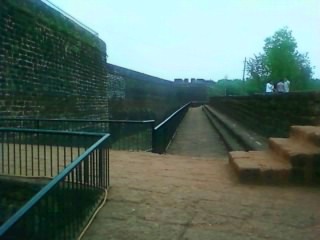Pic:Nitin Pai
It is located near the confluence of the Arabian sea and the Mandovi river.
The Portuguese word Miramar itself means sea view. The beach is also known as Gasper Dias.
The beach itself stretches around 2 kms but continues further overlooking the sea.
Pic:Nitin Pai
The Miramar beach starts in the gulf and ends in the Emerald coast parkway.
Several boats, ships, launches, catamarans,speed boats, barges etc ply over the vast coast of Miramar .
There are also some sea hotels (made on boats) and casinoes catering to the tourists thronging Goa.
Across the Miraramar beach are several offices, residences and commercial complexes.
A few kilometers away from the Miramar beach lies the famous Dona Paula village which holds the statue of Dona Paula which has many stories associated with it . The foremost being of Dona being a Portuguese woman and Paula a local Goan fisherman who fell in love with each other but had to face social ire because of their different cultures and so they decided to jump off the cliff and commited suicide.However it has ince been proved to be a apocryphal story.
Actually the village was named after Paula Amaral Antonio de Souto Maior who was the daughter of the viceroy of Jafnapatnam in present day Sri Lanka and the wife of a Spanish Fidalgo, after she visited the place in 1644. She was a philanthropist who later contributed to the village and the grateful villagers named their village (previously known as Oddavel) after her. The famous statues at the jetty near the village however do not belong to Paula but were sculpted by Dutch sculptress Baroness Leistner in likeness to the philosopher Robert Knox and his wife.
Text and Photographs (except the ones credited) by Abhijit Rajadhyaksha













































